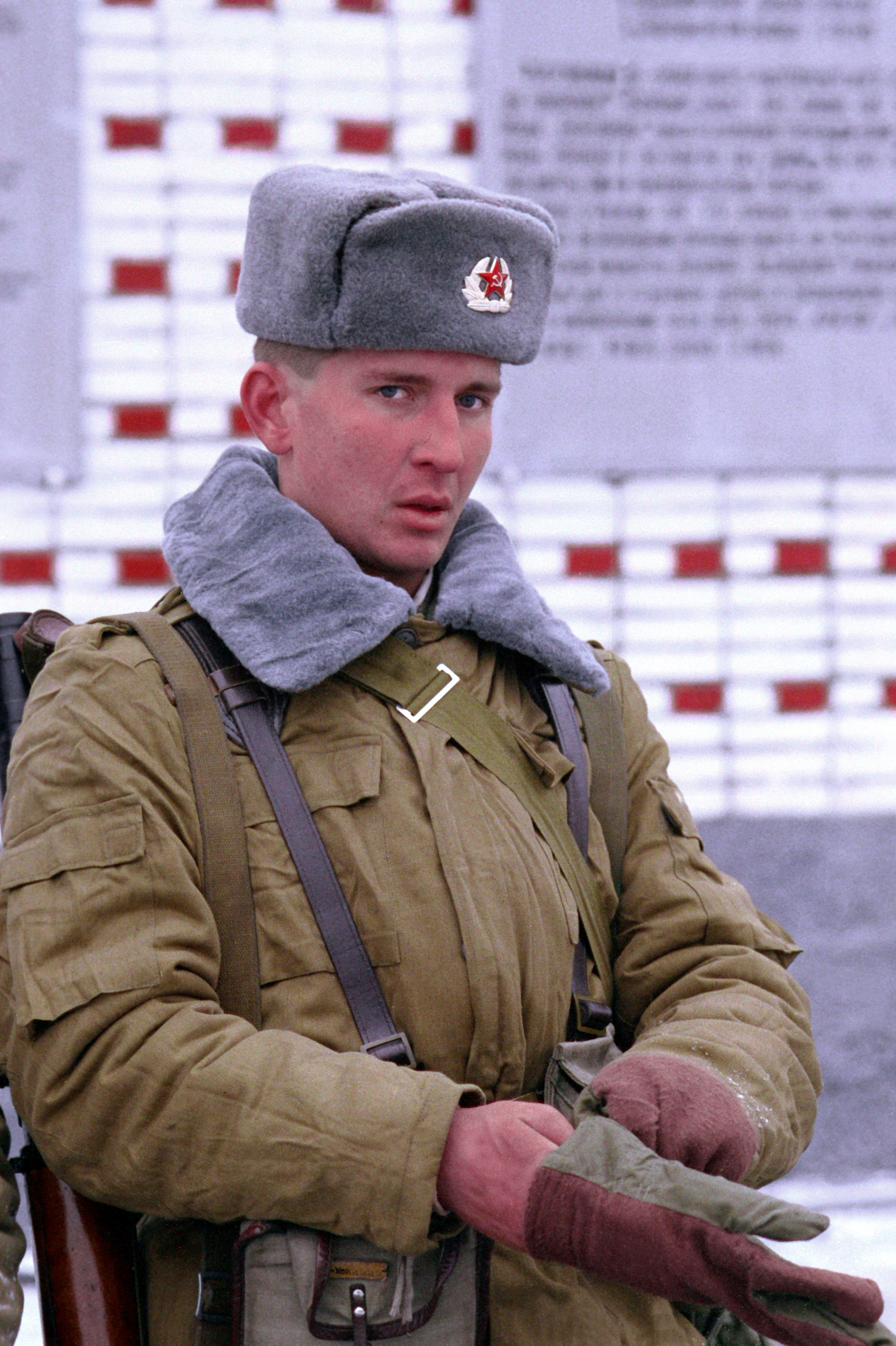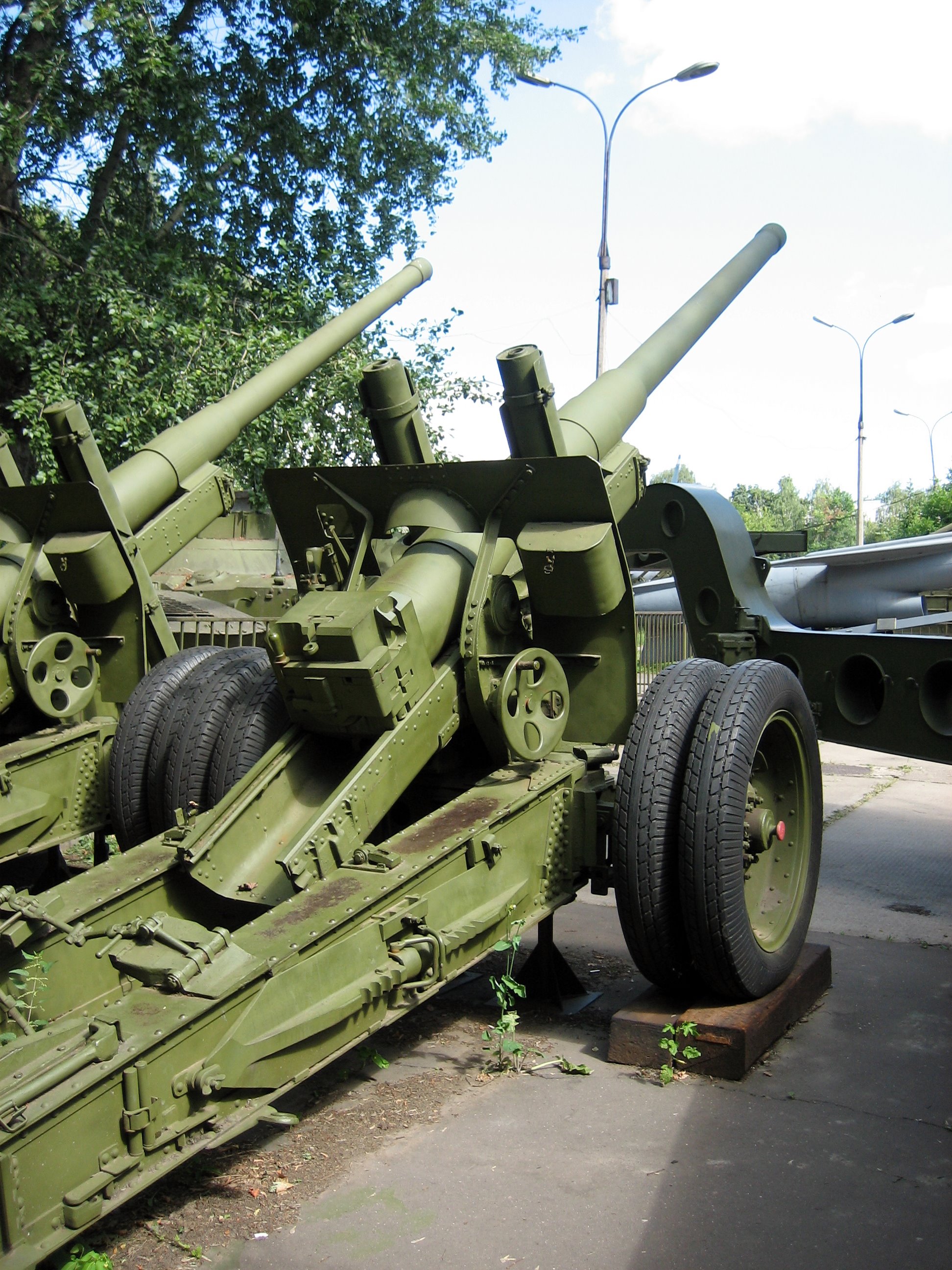|
D-74
The 122mm D-74 towed gun is a Soviet field gun. Developed in the late 1940s, it served with the Soviet Army and was widely exported. A number were produced under license in the People's Republic of China as the '' Type 60''. History The 122 mm (originally 48 lines) calibre has been in Russian service since the early 20th century. After World War II the Soviet Union developed two new long range guns to replace existing 122 mm and 152 mm guns such as 122 mm gun M1931 (A-19), 122 mm gun M1931/37 (A-19), 152 mm gun M1910/30 and 152 mm gun M1935 (Br-2). The two new guns were the 122 mm D-74 and the 130 mm M-46. The D-74 design was probably initiated in the late 1940s and it was first seen in public in 1955. It was designed by the well established design bureau at Artillery Plant No. 9 in Sverdlovsk (now Motovilikha Plants in Yekaterinburg), led by the eminent artillery designer Fëdor Fëdorovich Petrov who was also responsible for several World War II ... [...More Info...] [...Related Items...] OR: [Wikipedia] [Google] [Baidu] |
130 Mm Towed Field Gun M1954 (M-46)
The 130 mm towed field gun M-46 () is a manually loaded, towed 130 mm artillery piece, manufactured in the Soviet Union in the 1950s. It was first observed by the West in 1954. For many years, the M-46 was one of the longest range artillery pieces in existence, with a range of more than (unassisted) and (assisted). Design history The order was given in April 1946 to design a "duplex" artillery piece to replace the obsolete 122 mm gun M1931/37 (A-19), 152 mm howitzer-gun M1937 (ML-20) and other World War II era field guns, such as 122 mm Model 1931, 152 mm Model 1910/30, 152 mm Model 1935 (BR-2). The new pieces, designed by the Motovilikha Plants, factory No 172 (MOTZ), shared the same carriage and were given the designators M-46 (130 mm) and M-47 (152 mm). The respective GRAU designators are 52-P-482 and 52-P-547. The development phase was finished in 1950 and one year later, series production began. Many M-46s were exported. A second "duple ... [...More Info...] [...Related Items...] OR: [Wikipedia] [Google] [Baidu] |
Soviet Army
The Soviet Ground Forces () was the land warfare service branch of the Soviet Armed Forces from 1946 to 1992. It was preceded by the Red Army. After the Soviet Union ceased to exist in December 1991, the Ground Forces remained under the command of the Commonwealth of Independent States until it was formally abolished on 14 February 1992. The Soviet Ground Forces were principally succeeded by the Russian Ground Forces in Russian territory. Outside of Russia, many units and formations were taken over by the post-Soviet states; some were withdrawn to Russia, and some dissolved amid conflict, notably in the Caucasus. While the Ground Forces are commonly referred to in English language sources as the Soviet Army, in Soviet military parlance the term '' armiya'' (army) referred to the combined land and air components of the Soviet Armed Forces, encompassing the Ground Forces as well as the Strategic Rocket Forces, the Air Defence Forces, and the Air Forces. After World W ... [...More Info...] [...Related Items...] OR: [Wikipedia] [Google] [Baidu] |
152 Mm Towed Gun-howitzer M1955 (D-20)
The 152 mm gun-howitzer M1955, also known as the D-20, () is a manually loaded, towed 152 mm gun-howitzer artillery piece, manufactured in the Soviet Union during the 1950s. It was first observed by the West in 1955, at which time it was designated the M1955. Its GRAU index is 52-P-546. History 152 mm has been a Russian caliber since World War I, when Britain supplied BL 6-inch 26 cwt howitzer, 6-inch howitzers and Russia purchased 152 mm guns from Schneider-Creusot, Schneider (probably derived from the 155 mm Gun Mle 1877/16) for the Imperial Army. The new gun-howitzer, was a replacement of the pre-war 152 mm howitzer-gun M1937 (ML-20), ML-20 gun-howitzer (the 152 mm howitzer M1937) and various World War II era 152 mm field howitzers, Model 09/30, Model 1910/30, Model 1938 (M10) and 152 mm howitzer M1943 (D-1), Model 1943 (D-1). By Soviet definition, a 152 mm howitzer is "medium"-caliber artillery. It was designated a "gun-howitzer" because its muzzl ... [...More Info...] [...Related Items...] OR: [Wikipedia] [Google] [Baidu] |
Central Intelligence Agency
The Central Intelligence Agency (CIA; ) is a civilian foreign intelligence service of the federal government of the United States tasked with advancing national security through collecting and analyzing intelligence from around the world and conducting covert operations. The agency is headquartered in the George Bush Center for Intelligence in Langley, Virginia, and is sometimes metonymously called "Langley". A major member of the United States Intelligence Community (IC), the CIA has reported to the director of national intelligence since 2004, and is focused on providing intelligence for the president and the Cabinet. The CIA is headed by a director and is divided into various directorates, including a Directorate of Analysis and Directorate of Operations. Unlike the Federal Bureau of Investigation (FBI), the CIA has no law enforcement function and focuses on intelligence gathering overseas, with only limited domestic intelligence collection. The CIA is responsibl ... [...More Info...] [...Related Items...] OR: [Wikipedia] [Google] [Baidu] |
Muzzle Brake
A muzzle brake or recoil compensator is a device connected to, or a feature integral (ported barrel) to the construction of, the muzzle or barrel of a firearm or cannon that is intended to redirect a portion of propellant gases to counter recoil and unwanted muzzle rise. Barrels with an integral muzzle brake are often said to be ported. The concept of a muzzle brake was first introduced for artillery. It was a common feature on many anti-tank guns, especially those mounted on tanks, in order to reduce the area needed to take up the strokes of recoil and kickback. They have been used in various forms for rifles and pistols to help control recoil and the rising of the barrel that normally occurs after firing. They are used on pistols for practical pistol competitions, and are usually called compensators in this context.STI article o ... [...More Info...] [...Related Items...] OR: [Wikipedia] [Google] [Baidu] |
Motovilikha Plants
PJSC Motovilikha Plants / Motovilikhinskiye Zavody PAO (MOTZ, MOTZ.MM) (; ) is a Russian metallurgical and military equipment manufacturer. In 2016 Motovilikha Plants joined NPO Splav, a Rostec company. It is named after the former town of Motovilikha, where it's located, which in 1938 was amalgamated into the city of Perm. The town in turn was named after the eponymous river, a small Kama tributary. History The origins of the plant can be traced back to the year 1736, when Empress Anna issued a decree to establish a smelter with the purpose of producing steel. This steel was specifically intended to be used in nearby factories that were operational during that time. The main objective was to supply steel blocks that would be utilized in the manufacturing of rifles and guns. As the 18th century drew to a close, the production of weapons commenced in the village of Motovilikha as a response to the growing demand. These guns manufactured in Motovilikha played a significant ... [...More Info...] [...Related Items...] OR: [Wikipedia] [Google] [Baidu] |
152 Mm Gun M1935 (Br-2)
152 mm gun M1935 (Br-2) () was a Red Army, Soviet 152.4 mm heavy gun, produced in limited numbers by the Barrikady Industrial Association, Barrikady Plant in Stalingrad in the late 1930s. The most unusual feature of the gun was its tracked carriage, shared by a number of Soviet heavy artillery systems of the interwar period. Despite a number of drawbacks, most notably limited mobility and short service life of the barrel, the weapon was employed throughout the German-Soviet War; an upgraded variant with wheeled carriage, Br-2M, remained in service at least until the 1970s. Development and production B-10 Work on a long range 152 mm gun for Reserve of the Main Command units started in 1929, when the Obukhov State Plant, Bolshevik Plant in Saint Petersburg received from the Artillery Directorate requirements specifications for such a piece.Shirokorad – ''Encyclopedia of Soviet Artillery''. The project received a factory index B-10. First barrel was manufactured i ... [...More Info...] [...Related Items...] OR: [Wikipedia] [Google] [Baidu] |
152 Mm Gun M1910/30
152 mm gun model 1910/30 was a Soviet field gun, a modernization of World War I era 152 mm siege gun M1910. The gun was briefly used by Red Army in the Eastern Front of World War II. Description M1910/30 was powerful long range gun with big (40°) maximum elevation. It was equipped with interrupted screw breechblock and recoil system consisting of hydraulic buffer and hydro-pneumatic recuperator. The carriage was of single trail type and had metal wheels with solid tires. The crew was protected by 7 mm shield. In transportation, the barrel was removed and transported separately. It took some 10–15 minutes to set the gun up for combat and up to 23 minutes to make it ready for transportation. Development and production history The gun resulted from a modernization of the 152-mm siege gun M1910, initially developed by Schneider. The upgrading project was prepared by the design bureau of the Main Artillery Directorate, its main purpose was to increase range. The chan ... [...More Info...] [...Related Items...] OR: [Wikipedia] [Google] [Baidu] |
122 Mm Gun M1931/37 (A-19)
122 mm corps gun M1931/37 (A-19) () was a Soviet Union, Soviet field gun developed in late 1930s by combining the barrel of the 122 mm gun M1931 (A-19) and the carriage of the 152 mm howitzer-gun M1937 (ML-20). The gun was in production from 1939 until 1946. It saw action in World War II (primarily with corps and RVGK artillery of the Red Army) and remained in service for a long time after the end of the war. Vehicle-mounted variants of the gun were fitted to the IS-2 and IS-3 (tank), IS-3 tanks of the Iosif Stalin tank, Iosif Stalin series of tanks and the ISU-122 self-propelled gun. Development history In 1936 the Red Army adopted the 122 mm gun M1931, also known as A-19. Unlike earlier ordnance pieces used by the Red Army, it had Gun carriage#Modern gun carriages, split trail carriage with suspension, and consequently improved mobility and traverse. The carriage of M1931 had a number of shortcomings though. The elevation mechanism was slow and unreliable; solid-tired ... [...More Info...] [...Related Items...] OR: [Wikipedia] [Google] [Baidu] |
122 Mm Gun M1931 (A-19)
122 mm corps gun M1931 (A-19) () was a Soviet field gun, developed in the late 1920s and early 1930s. In 1939 the gun was replaced in production by an improved variant, M1931/37. The piece saw action in World War II with the Red Army. Captured guns were employed by Wehrmacht and the Finnish Army. Development history From the late 1920s the Red Army sought to upgrade its First World War era artillery pieces. In January 1927 the Main Artillery Directorate (GRAU) initiated development of a new 122 mm gun for corps artillery. The development was initially entrusted to the GRAU design bureau (led by F. F. Lender until his death in September 1927), and from June 1929 – to the design bureau of the All-Union Ordnance Trust, with assistance from GRAU designers.Shirokorad A. B. – ''Encyclopedia of the Soviet Artillery''. On 17 June 1929 a prototype, along with technological documentation, was ordered from Motovilikha Plants. It underwent trials starting in October 1931, wit ... [...More Info...] [...Related Items...] OR: [Wikipedia] [Google] [Baidu] |





